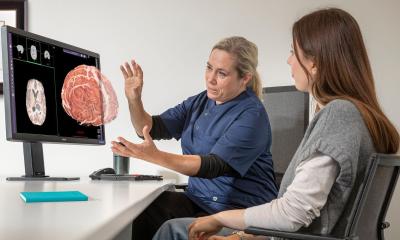Biomod 3S
The Alternative for 3D Reconstruction
With over 30 years of experience in the medical imaging market, DMS Imaging, the newly created division that includes the brands Apelem, DMS, AXS Medical and Medilink, offers a complete range of innovative solutions in radiology, bone densitometry, stereo-radiography and posturology. One such solution is the Biomod 3S, an elegant tool that brings 3D technology to classic 2D x-ray rooms.

The technology BIOMOD 3S combines optic information about back morphology with a radiographic image of the spine (stitching) to yield a 3D reconstruction of the vertebral column.
With absolutely no additional dose compared to a classic stitching exam, and no change in the clinical routine, the 3D model gives practitioners a complete view of the spine in an upright weight-bearing position. The automatic calculations of frontal and sagittal 2D/3D measurements allow for a thorough and accurate evaluation of spine deformities common in pathologies such as: scoliosis, kyphosis, vertebral compression, dorsopathy as well as posture and balance anomalies, just to name a few.
This unique and forward-looking technology, Biomod 3S, can be seamlessly integrated into an ANY chest and bone room or R/F suite capable of full spine stitching exams, and is an excellent added value to an existing suite.
For more information visit our website:
07.11.2016











